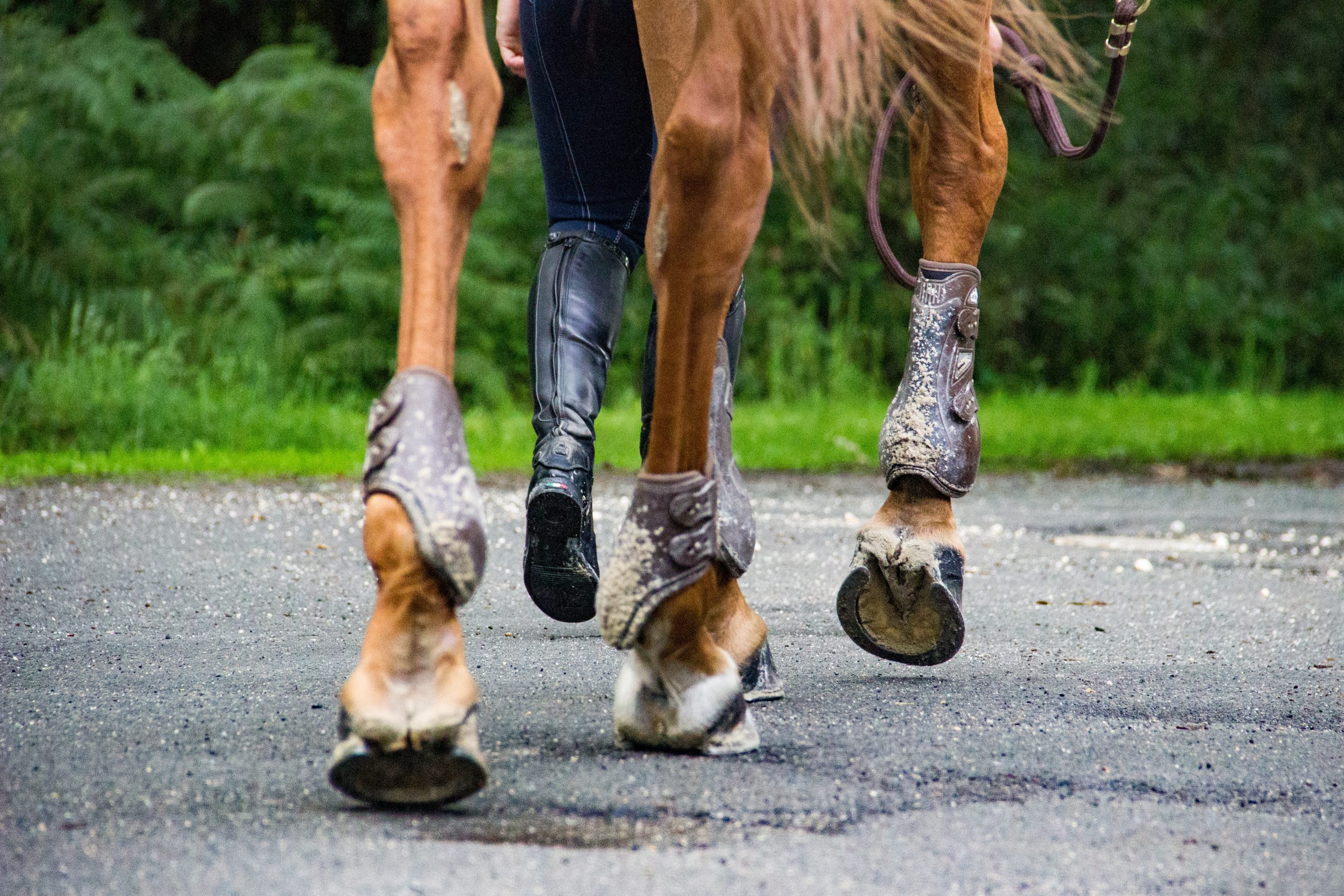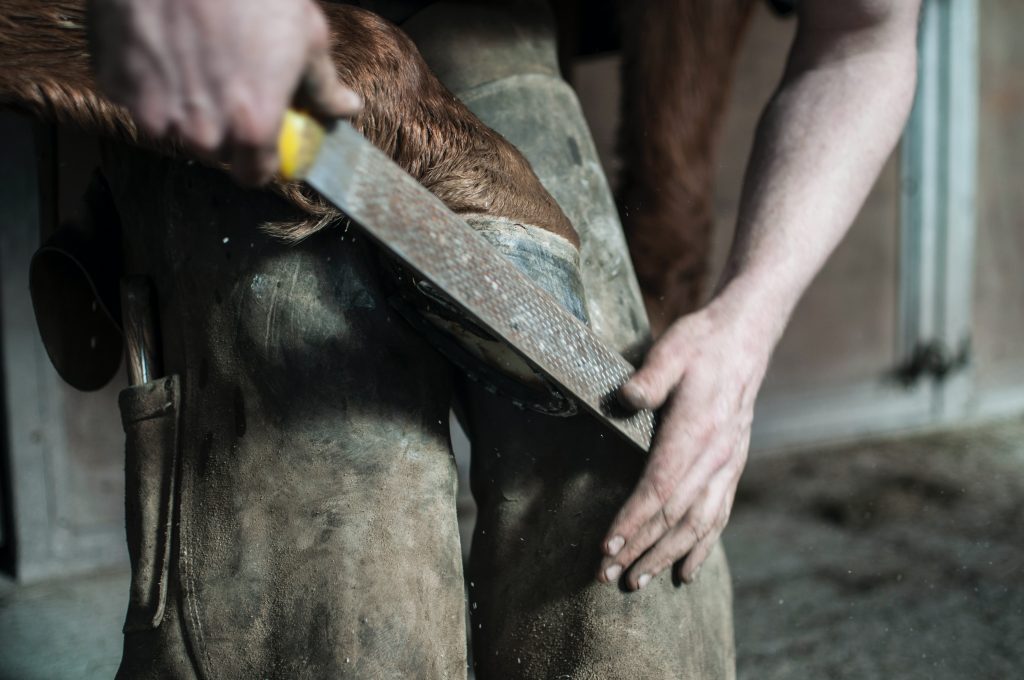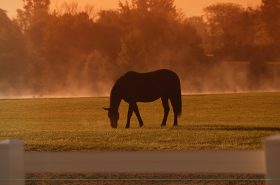There is no shortage of tools needed around the barn, but did you know that there are five farrier tools every barn should have as well? I learned this by experience on more than one occasion. It didn’t matter if the horses I worked with were shod or barefoot, at some point I would run into a hoof issue that I either needed to use the barn’s farrier tools or wished the barn I was working at had farrier tools.

My Favorite Example
Take Forrest for example. Standing at a massive 18 hands this gentle giant had a habit, like many horses, of scratching his head with his hind hoof. Unfortunately, he also had Shivers, so his hind limb coordination wasn’t as coordinated as most horses. On this particular day, he was turned out in his leather halter. I happened to be sitting in front of the paddock eating my lunch when he went to scratch his head. I heard a big snap, and then he spooked a little bit. That’s when I noticed the broken halter.
When I got to Forrest to get the broken halter off him, I realized that the halter clip was missing. I looked in the dirt for a while, with no luck, and then I looked at Forrest. The halter had broken because part of the throatlatch, with the halter clip still attached, had gotten stuck between his hoof and shoe. The farrier couldn’t come for another two hours, but we were prepared with the tools, and basic knowledge to remove the shoe, and broken halter piece, until the farrier could come to tack his shoe back on.
How I Learned
I learned the basics of farriery while I was attending a Barn Management training course in Virginia. Every Tuesday the local farrier came to teach us about the hoof for as much as he could fit into an hour. He taught us about the different types of shoes in the classroom, and then after that, we were hands-on. We learned how to pull a shoe, trim and rasp a hoof, as well as how to tack a shoe back on. He emphasized how having this basic knowledge would come in handy in many situations, especially because the farrier isn’t always 5 minutes away.
Disclaimer
Before we get into the 5 farrier tools every barn should have on hand I have one disclaimer. I highly recommend asking your vet or farrier if they’d be willing to show you how to use these tools correctly, and if they’d be willing to supervise a practice run. I do think knowing how to tack on a shoe is also an important skill for horse owners, but I have purposely left the driving hammer, and nails, off this list. There isn’t a whole lot of hoof wall around the very sensitive parts of the hoof which, if injured, could render your horse lame for quite a while. That is why I don’t recommend trying to tack a shoe back on yourself without having had consistent training, and practice with a farrier. With that being said, let’s jump into what 5 farrier tools every barn should have.

Farrier Tools
Horse owners know you can never be too prepared when it comes to horses. You can find most of these tools on any horse supply site online, and sometimes at your local tack stores. Having these five basic farrier tools on hand is another way to ensure that your horses’ hooves remain in their best condition possible in the event that the farrier isn’t close by.
1.) Nail Pullers
These come in handy if your horse gets a hot nail; you can remove the one nail causing the problem instead of the entire shoe. They also make it much easier to remove an entire shoe.
2.) Shoe Pullers
These are necessary because some nails just don’t want to be pulled out. The next best thing you can do is to pull as many nails as you can with the nail pullers first. Then, use the blunt shoe pullers to get the shoe off.
3.) Hoof Nippers
These are only to be used in the worst-case scenario. For example, if there is a piece of hoof dangling that could make the hoof damage worse. However, if there is any blood or serious injury to the hoof do not trim anything. Your vet and/or farrier should be able to handle this situation.
4.) Hoof Knives
There are right and left-handed versions of this tool based on which side of the hoof you are working on. It’s not determined by whether you are right or left-handed. This tool is used for taking off paper-thin layers of the sole. It’s not one of the more common farrier tools needed but is still good to have on hand.
5.) Rasp
You have a couple of size options with the rasping tool. You can get the long version which has a course, and a smooth side, like the one your farrier would have, or another option is the compact Tough1 Handy Rasp 2 Pc Set.
Leave us a comment; tell us about your favorite farrier tool(s) and some of your horses’ hooves stories!
Love this blog post? We think you will like The Highest-Paying Equine Careers in the Industry by Emily Fought.



